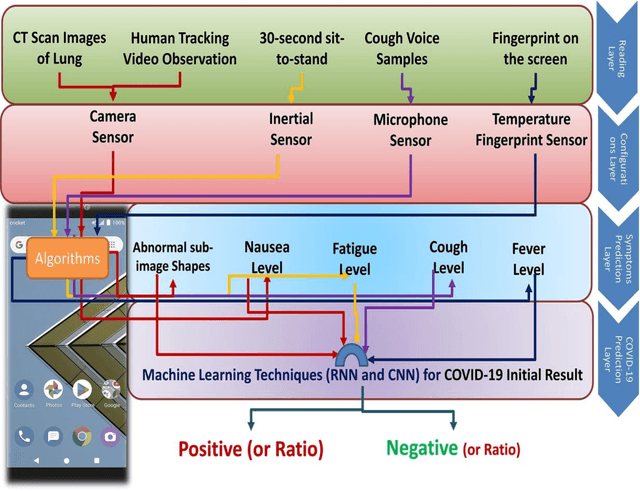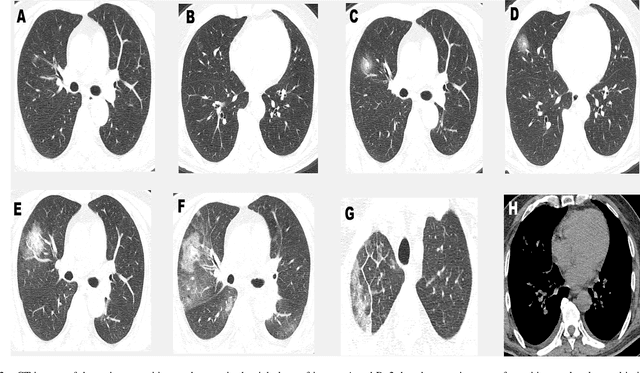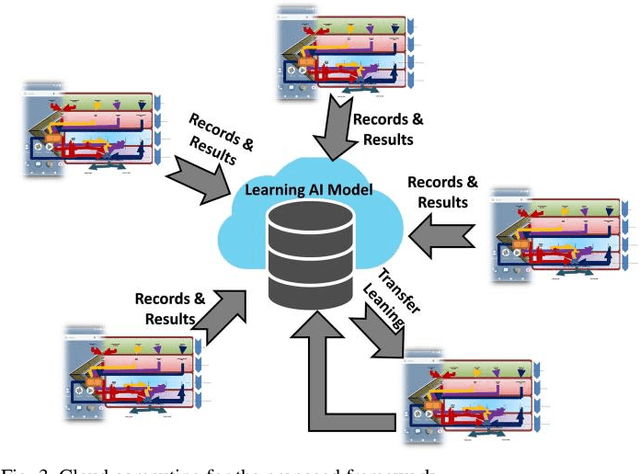Kevin Curran
A Novel AI-enabled Framework to Diagnose Coronavirus COVID 19 using Smartphone Embedded Sensors: Design Study
Mar 16, 2020


Abstract:Coronaviruses are a famous family of viruses that causes illness in human or animals. The new type of corona virus COVID-19 disease was firstly discovered in Wuhan-China. However, recently, the virus has been widely spread in most of the world countries and is reported as a pandemic. Further, nowadays, all the world countries are striving to control the coronavirus disease COVID-19. There are many mechanisms to detect the coronavirus disease COVID-19 including clinical analysis of chest CT scan images and blood test results. The confirmed COVID-19 patient manifests as fever, tiredness, and dry cough. Particularly, several techniques can be used to detect the initial results of the virus such as medical detection Kits. However, such devices are incurring huge cost and it takes time to install them and use. Therefore, in this paper, a new framework is proposed to detect coronavirus disease COVID-19 using onboard smartphone sensors. The proposal provides a low-cost solution, since most of the radiologists have already held smartphones for different daily-purposes. People can use the framework on their smartphones for the virus detection purpose. Nowadays, smartphones are powerful with existing computation-rich processors, memory space, and large number of sensors including cameras, microphone, temperature sensor, inertial sensors, proximity, colour-sensor, humidity-sensor, and wireless chipsets/sensors. The designed Artificial Intelligence (AI) enabled framework reads the smartphone sensors signal measurements to predict the grade of severity of the pneumonia as well as predicting the result of the disease.
Discriminating between Nasal and Mouth Breathing
Aug 25, 2010


Abstract:The recommendation to change breathing patterns from the mouth to the nose can have a significantly positive impact upon the general well being of the individual. We classify nasal and mouth breathing by using an acoustic sensor and intelligent signal processing techniques. The overall purpose is to investigate the possibility of identifying the differences in patterns between nasal and mouth breathing in order to integrate this information into a decision support system which will form the basis of a patient monitoring and motivational feedback system to recommend the change from mouth to nasal breathing. Our findings show that the breath pattern can be discriminated in certain places of the body both by visual spectrum analysis and with a Back Propagation neural network classifier. The sound file recoded from the sensor placed on the hollow in the neck shows the most promising accuracy which is as high as 90%.
 Add to Chrome
Add to Chrome Add to Firefox
Add to Firefox Add to Edge
Add to Edge